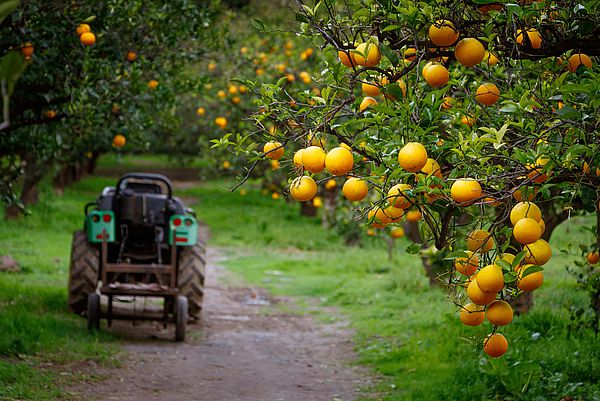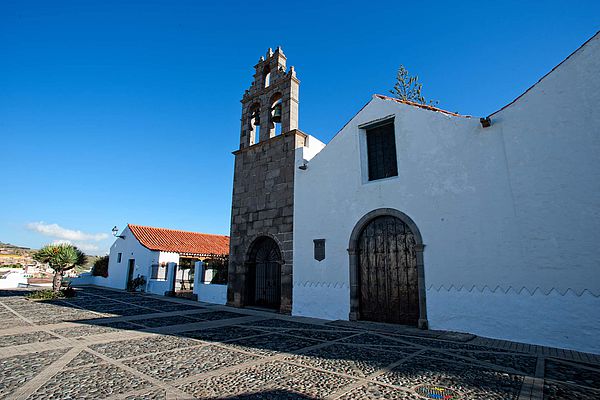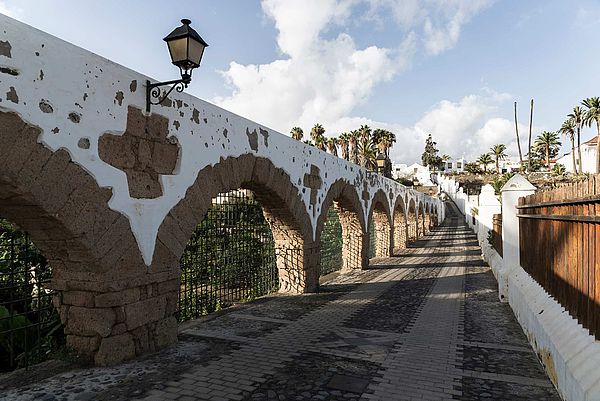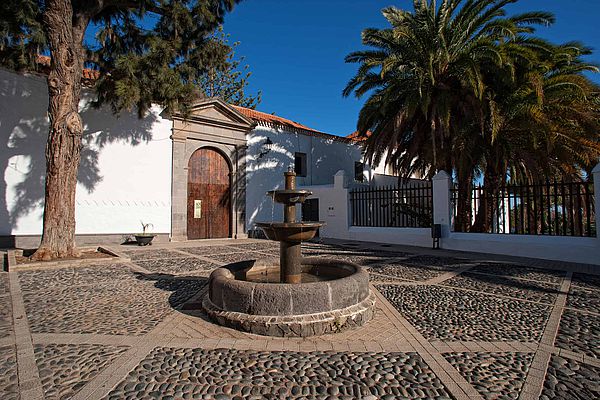Many Europeans have been eating salads with Canary tomatoes now for over a century! Its cultivation for trade was pioneered by the English living in the Canaries as far ago as 1885, at which time a Mister Blisse, who had come over as an employee of the Swanston company, started to plant the vegetable “on an allotment in the city of Telde” for export to Great Britain. Others followed suit, such as Henry Wolfson, a broker, who sent his first lot of tomatoes to “London’s Covent Garden in September 1888 through the leading fruit firm of Fyffe, Hudson & Co”, according to historian Javier Márquez.


Apart from this curious historical fact, Telde’s main agricultural produce for which it is best known today is the “ombligo” orange, taken from the English word “navel”. It is a well known and highly regarded variety, grown on estates at Higuera Canaria, La Herradura, Salinetas, Hoya Niebla or El Caracol, and is a favourite for many islanders.
For this reason, every year since 2011 around the middle of December, an Orange Fair has been held in the district of San Juan de Telde. It is not merely a get together for consumers and producers to taste and purchase the fruit, but is also a forum for all sorts of recipes with oranges in them, such as the traditional carnival orange cakes or marmalade. As the local media put it when reporting on this event, the orange here has “other forms and flavours different from how they come off the tree. They are used in ice creams, slush puppies, iced nougats, wafers, or are put in buns, sponge cakes or with melted chocolate”.

The success and prestige of Telde’s oranges, for their quality and taste, have encouraged many to increase the number of estates dedicated to this particular fruit in other districts of the municipality. There are those, however, who have decided to return to the cultivation of wine, which was just as famous centuries ago, when it was exported to America from the port at Melenara. This allowed Francisco Peñate Rivero, for example, on the 3rd February 1994 to cork his first bottle of wine at his vineyard estate called La Rocona, in Palmital Alto.
His bodega, like the rest of them that have their production in Telde, is quite modest in size, but can rightly claim to have special wines worthy of adorning any meal table. His grandfather, Juan Peñate Martín, emigrated to Cuba twice in order to raise the 7,015 pesetas he needed to buy the farmstead at La Rocona. He planted vines there, along with potatoes, barley, wheat and sweet peas, and his grandson told the story of how the wine made at this bodega was sometimes “the only thing they could offer thirsty walkers as they came past on the royal road from San Mateo to Telde, even though they were actually only after some water”.

One crop that hasn’t made a comeback, but still holds vestiges of its former presence in the municipality in the shape of a very interesting hydraulic and industrial heritage, is the sugar cane crop, which has been restored in recent years. Thus, the Valle de Jinámar –which continues to celebrate its age-old Fiesta de la Caña Dulce each December– has “one of the finest hydraulic heritages in the Canaries”, a spectacular 19th century turning wheel within a great estate which cultivated sugar cane, “on a curious octagonal tower, on whose upper level, in order to get water up from the well, they installed a winch with piston pumps, pulled by mules” as described by historian Francisco Suárez and architect Jorge Manzano. Nearer to the town of Telde itself, another interesting 19th century architectural gem is the Sugar Machine, as it was referred to back then, which was the name given to the distillery which made Telde Rum up until 1990.
Would you like to learn about the production processes of olive oil?
Los Olivos Ecological Centre, in Telde, offers guided tours around its estate, where they show how olive oil is made. They produce olives ecologically, and show you around their olive press and store.
For further information, go to: Centro Ecológico Los Olivos